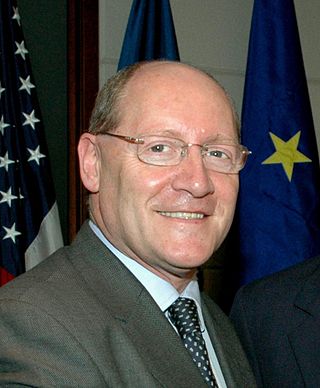
The 2004 European Parliament election was the United Kingdom's part of the wider 2004 European Parliament election which was held between 10 and 13 June 2004 in the 25 member states of the European Union. The United Kingdom's part of this election was held on Thursday 10 June 2004. The election also coincided with the 2004 local elections and the London Assembly and mayoral elections. In total, 78 Members of the European Parliament were elected from the United Kingdom using proportional representation.

Bethnal Green and Bow is a constituency in Greater London, represented in the House of Commons of the UK Parliament since 2010 by Rushanara Ali of the Labour Party.

The 2005 United Kingdom general election was held on Thursday 5 May 2005, to elect 646 members to the House of Commons. The governing Labour Party, led by Tony Blair, won its third consecutive victory, with Blair becoming the second Labour leader after Harold Wilson to form three majority governments. However, its majority fell to 66 seats compared to the 167-seat majority it had won four years before. This was the first time the Labour Party had won a third consecutive election, and remains the party's most recent general election victory.

The region of Greater London, including the City of London, is divided into 73 parliamentary constituencies which are sub-classified as borough constituencies, affecting the type of electoral officer and level of expenses permitted.

Sir Percy Alfred Harris, 1st Baronet, PC was a British Liberal Party politician. He was Liberal Chief Whip and Deputy Leader of the Liberal Parliamentary Party.
The Municipal Reform Party was a local party allied to the parliamentary Conservative Party in the County of London. The party contested elections to both the London County Council and metropolitan borough councils of the county from 1906 to 1945.
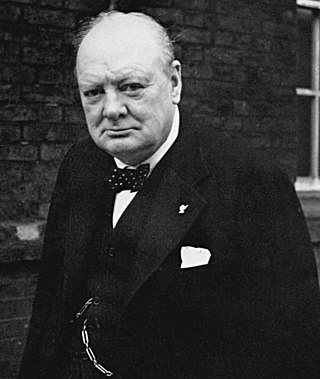
Elections in England and Wales, 1949 held during the week of 4–9 April for County Council positions, resulted in sweeping Conservative gains and correspondingly heavy Labour losses. A remarkable feature of the elections was the "dead heat" in the London County Council between Labour and the Conservatives, who each won 64 seats, with the Liberals retaining one seat, that of Sir Percy Harris in Bethnal Green. Outside London, Labour lost its former control of Middlesex, Essex, Northumberland, and the West Riding of Yorkshire; retained control of Derbyshire, Durham, Glamorgan, Monmouthshire, and Nottinghamshire, but won Carmarthenshire, the only county gained by Labour.
An election to the County Council of London took place on 5 March 1925. The council was elected by First Past the Post with each elector having two votes in the two-member seats. The Municipal Reform Party retained a large majority, while the Labour Party established itself as the principal opposition, supplanting the Progressive Party.
This is the results breakdown of the 2005 general election.
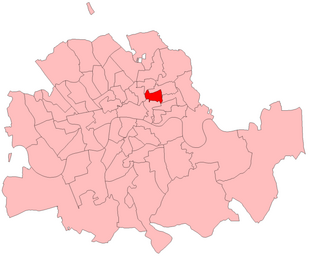
The Bethnal Green South West by-election was a Parliamentary by-election held on 29 July 1911. It returned one Member of Parliament (MP) to the House of Commons of the Parliament of the United Kingdom, elected by the first past the post voting system.

The 1986 Hammersmith and Fulham Council election took place on 8 May 1986 to elect members of Hammersmith and Fulham London Borough Council in London, England. The whole council was up for election and the Labour party gained overall control of the council.

An election to the County Council of London took place on 13 April 1961. It proved to be the last election to the council, and plans for its replacement by the Greater London Council were already in process. The council was elected by First Past the Post with each elector having three votes in the three-member seats.
An election to the County Council of London took place on 16 April 1958. The council was elected by First Past the Post with each elector having three votes in the three-member seats. The Labour Party, who had already run the council for 24 years, won their largest ever majority.
An election to the County Council of London took place on 31 March 1955. The council was elected by First Past the Post with each elector having three votes in the three-member seats. The Conservative Party made significant gains, but the Labour Party retained a substantial majority.
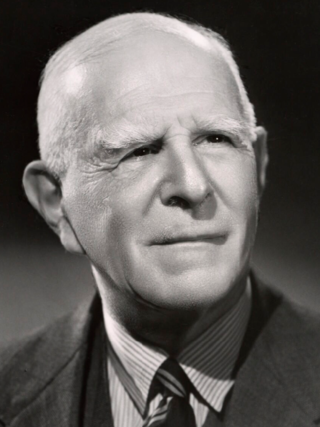
An election to the County Council of London took place on 7 April 1949. The council was elected by First Past the Post with each elector having three votes in the three-member seats. The Conservative Party made substantial gains, achieving the same number of seats as the Labour Party. However, Labour held the chair of the council, and was thus able to retain control.

An election to the County Council of London took place on 7 March 1946. The council was elected by First Past the Post with each elector having two votes in the two-member seats. The Labour Party once more made gains, again increasing their majority over the Conservative Party.
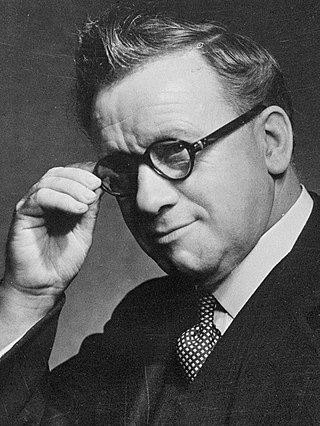
An election to the County Council of London took place on 4 March 1937. The council was elected by First Past the Post with each elector having two votes in the two-member seats. The Labour Party made gains, increasing their majority over the Municipal Reform Party.

An election to the County Council of London took place on 8 March 1934. The council was elected by First Past the Post with each elector having two votes in the two-member seats. The Labour Party made large gains from the Municipal Reform Party, and for the first time won control of the council..

An election to the County Council of London took place on 5 March 1931. The council was elected by First Past the Post with each elector having two votes in the two-member seats. The Municipal Reform Party slightly increased its majority on the council, with overall results matching those from 1925.

An election to the County Council of London took place on 8 March 1928. The council was elected by First Past the Post with each elector having two votes in the two-member seats. The Labour Party made slight gains at the expense of the Municipal Reform Party, which nonetheless retained a substantial majority.












